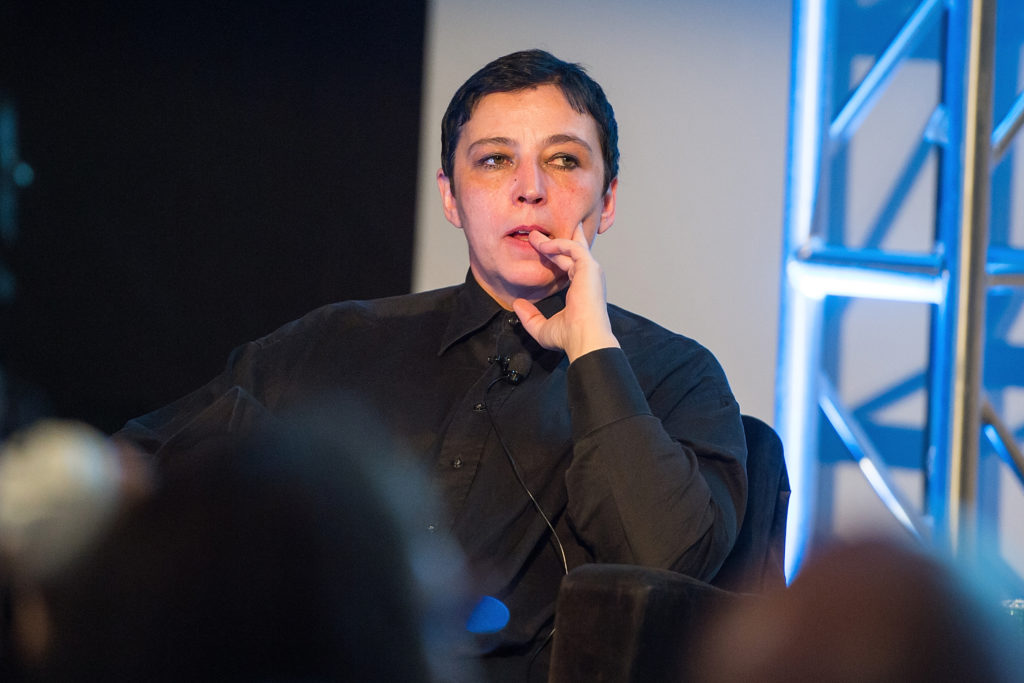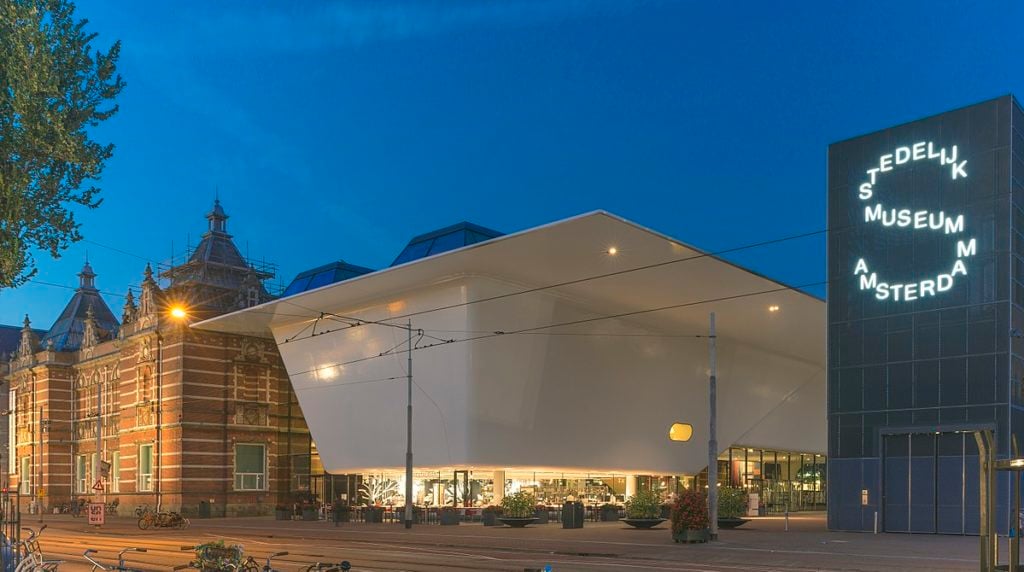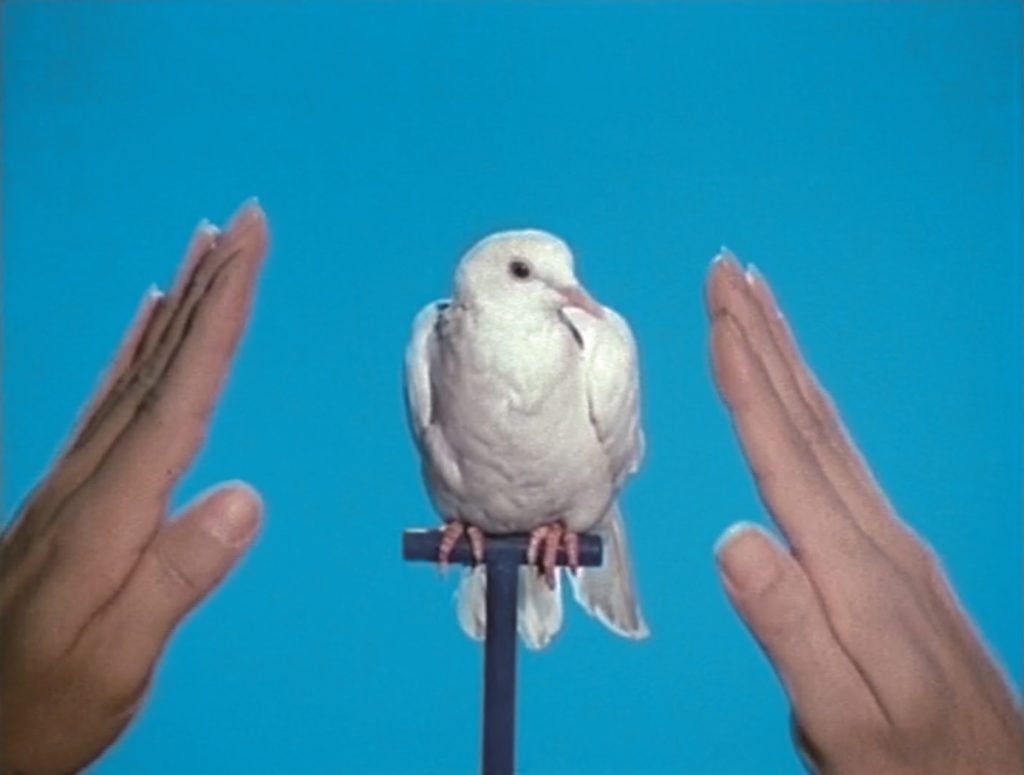Art World
Can Museum Curators Ever Moonlight as Art Advisors Without Corrupting Themselves?
In the wake of Beatrix Ruf's resignation from the Stedelijk, curators are re-examining the common practice of offering pro bono advice to collectors.

In the wake of Beatrix Ruf's resignation from the Stedelijk, curators are re-examining the common practice of offering pro bono advice to collectors.

Beatrix Ruf—one of the most influential curators working today—sent shockwaves through the art world when she abruptly resigned as director of Amsterdam’s Stedelijk Museum in September. Her departure followed a series of investigative reports in the Dutch newspaper NRC Handelsblad that raised questions about her ties to private collectors, an art advisory company she operated while leading the museum, and other potential conflicts of interest.
As the prices for contemporary art have ballooned, a growing number of wealthy people are willing to pay top dollar for advice from curators working at prestigious and tastemaking institutions. Indeed, the New York Times reported that Swiss collector Michael Ringier paid Ruf 1 million Swiss Francs ($1 million) as a “thank-you gift” for their 20-year working relationship before she arrived in Amsterdam.
But the Ruf imbroglio has also made some reexamine the relationships that have long existed between collectors and curators. In light of the rising stakes, do the old rules still apply? And how closely were they ever really followed in the first place?

The Stedelijk Museum, historical building and new wing. Image courtesy of the museum.
“It’s something we talk about and something I’m thinking about even more in the wake of this,” says Mary Ceruti, the director of SculptureCenter in Long Island City, of the ties between the public and private sectors.
The perception that curators are making extra cash on the side of their jobs at public institutions can have a negative effect on the industry as a whole, even if only a small number of people are doing it, says Rob Storr, the former dean of the Yale School of Art.
“It exposes institutions to a huge backlash anytime the populist who hates Modern art comes along and says, ‘Everyone is profiteering,’” he notes. Speaking in London recently, Storr warned of the danger of public museums being seen as “a great big casino for wealthy people.”
There is a well-worn tradition of curators offering advice to collectors. And most agree that these relationships can often be ethically sound and beneficial for both parties—as long as money doesn’t change hands.
“One of the main tasks of a curator is to develop a collection, and if I can bring in a collector who can donate work we can’t afford to buy, it seems I’m very much doing my job,” says George Goldner, the former chairman of drawings and prints at the Metropolitan Museum of Art in New York. After he left the Met, Goldner began advising the collector Leon Black—but he says he did not accept payment from the patron until after he retired from the museum.
“It’s a special and unique relationship, if done well,” says the Chicago-based collector Irving Stenn, whose collection of drawings from the 1960s and ‘70s was greatly informed by his conversations with the Art Institute of Chicago curator Mark Pascale.
Pascale would rarely give him explicit advice about what to buy, Stenn says, but he would direct him to books, articles, and exhibitions to help him make more informed decisions. Prices rarely came up. “I’ve felt it’s unfair to ask their opinions on value,” Stenn says.
In 2015, he donated more than 100 drawings to the Art Institute. “Curators help the collector to develop worthy collections,” Stenn says, “and it’s good to remember to give a little back.”
Ruf has denied the Dutch media’s accusations of conflict of interest, maintaining that most of her freelance income in recent years came from work completed before she became the director of the Stedelijk. She told the Times that she cut ties with Ringier in 2014, the same year she joined the Stedelijk from the Kunstalle Zûrich, where she had been director for more than a decade.
But one prominent curator notes that the fact that Ruf was getting paid to give advice while serving as director of any institution is troubling because of her status as a prominent arbiter of taste. “She was known for taking American artists and introducing them to Europe—and that had a marked effect on their prices,” the curator says.
The Stedelijk recently unveiled a sprawling exhibition of works that had been donated by another collector, Thomas Borgmann. NRC also questioned the deal the museum made to secure the Borgmann gift (which was accompanied by a $1.8 million purchase of other work from his collection). Two purchased works are among those on view in “Jump Into The Future–Art of the 90s and 2000s: The Borgmann Donation” (until March 4, 2018).

Jack Goldstein, White Dove (1975). © The Estate of Jack Goldstein. Collection Stedelijk Museum Amsterdam, donation Thomas Borgmann, Berlin.
After her resignation, Ruf noted that her supplemental outside work—which included serving as a consultant to the investment bank Goldman Sachs on its art collection—was approved by the Stedelijk museum’s board. “I am confident that I reported everything in good faith,” she said.
After Ruf’s departure, however, some institutions are now doing some soul-searching of their own to determine if they need to revisit the rules that govern this special relationship between curators and collectors.
The municipality of Amsterdam has commissioned two reports into how the Ruf situation arose. One will look at whether her pay was in line with that of Dutch civil servants; the other will examine the institution’s compliance with Dutch cultural governance code.
“Some institutions have policies” governing the services curators can formally or informally provide to collectors, notes Judith Pineiro, the director of the Association of Art Museum Curators. “Some don’t. It’s a constantly in flux situation.”
The organization’s guidelines on professional practice specify that curators should not accept “monetary or personal remuneration” in exchange for authentication or assessment of art owned by collectors.
Meanwhile, the International Council of Museums’s code of ethics states that curators “should not undertake other paid employment or accept outside commissions that are in conflict with, or may be viewed as being in conflict with the interests of the museum.”
But problems can arise whether or not a curator is paid for their advice. Storr recalls reluctantly offering his opinion to a donor about an “overpriced Picasso Blue Period painting” when he worked at Yale. “I told him it wasn’t worth the money and he never talked to us again,” Storr recalls. Sometimes, he explains, patrons “don’t really want your advice, they want you to validate their taste.”
A curator might also offer extensive advice to a collector—examining auction catalogues, accompanying them to shows and fairs—with the hope of securing a gift that never materializes. Perhaps in an effort to avoid this issue, the Museum of Modern Art’s code of conduct specifies that “trustees should not use their position to obtain unreasonable or excessive services or expertise.”
Max Hollein, who has led museums in Frankfurt and is now the director of the Fine Arts Museums San Francisco, says rules are much stricter, more businesslike, and “more elaborate” in the US than in Europe. That said, gray areas remain in the US as well. One is around the valuation of gifts, where a substantial tax write-off is part of the equation. He acknowledges that whenever a curator works closely with collectors or dealers, “decisions can be influenced,” which is why rules and transparency are crucial.
Regardless of the guidelines in place, these relationships inevitably get blurry, says Tom Eccles, the director of the Center for Curatorial Studies at Bard College. “I advise our students to separate their own lives, values, and own economic situation from the collectors and patrons that we are involved with as curators,” he says. “You aren’t an art consultant. That line has gotten rather muddied.”
Since 2006, Eccles has served as an advisor to the collector Maja Hoffmann and her LUMA Foundation in Arles, France—but he says the role was approved by Bard’s president and his consultant fee goes directly to the college, not his own pocket. Hoffman has also donated $7.5 million to Bard, he says, and her foundation supports a fellowship at the Center for Curatorial Studies. (Ruf is also on the core team of advisors for the LUMA Foundation.)

Olafur Eliasson, Parliament of Reality (2009), a commission at Bard funded by the LUMA Foundation. Courtesy of Hessel Museum of Art.
Although none of the 10 people we reached out to for this story were willing to comment about Ruf’s situation on the record, most agreed that it appeared she had stepped over the line by operating a private advisory company and accepting payment for advice while working for an institution in Europe. But no one was confident about how widespread this practice really is, or whether it has become more common over time.
Because curators can transform the market for an artist’s work simply by including them in an exhibition, they run the risk of appearing as if they are self-dealing when they advise private collectors. “She was able to play both sides,” says one curator. “She could not only tell someone, ‘this is a great artist to buy,’ but make them a great artist to buy.” Conceivably, a curator’s professional judgement concerning which artists should be included in shows could also be impacted by a paying collector’s taste, or market investments.
Goldner points to another thorny issue. “If you are paid by two separate people at the same time, it muddies the waters. All of a sudden you find something, and the question is: who gets it first?”
But many say that museums are partly to blame when curators seek out lucrative freelance work. As the director of one of the most influential contemporary art institutions in the world, Ruf had an annual salary of around only $130,000 per year, according to the Dutch press. (Her total reported annual income, which included her outside work approved by the Stedelijk, was $730,000 in 2016.)
Storr says museums can’t expect to maintain their status as intellectually independent while allowing curators to accept outside work “to cover for their failure to pay them properly.”
Indeed, the museum sector is notoriously poorly paid, despite the fact that top jobs often require advanced degrees and extensive training. The landscape has improved in recent years in the US, Canada, and Mexico, where chief curators make an average of $143,400 and directors make an average of $294,000 per year, according to the most recent salary survey by the Association of Art Museum Directors.
In the UK and Europe, however, salaries are generally much lower. Salary guidelines published by the UK Museums Association earlier this year say a curator should make a median salary of at least £38,518 ($52,000) and a director should make at least £45,000 ($60,000). Large institutions in major UK cities offer higher salaries, but they rarely exceed those in the US.
Furthermore, museums benefit from their staff’s close ties with collectors and patrons. As public funding for museums declines—particularly in Europe—institutions have placed a premium on recruiting art historians who can moonlight as fundraisers.
Sam Thorne, the director of Nottingham Contemporary, says that it is unusual that Ruf ran a “one-woman advisory service.” But her other outside activities—such as serving on juries and boards—are not.
“In a way, it is not surprising that Beatrix continued a lot of the activities for which she was very well known” in her previous role, Thorne says. “I would imagine… that the [Stedelijk] trustees appointed her exactly for that ability to attract collections, donations, and all the rest.”
“Museums today want directors to bring in resources through these kind of other relationships,” Eccles says. “Those fundraising activities demand close personal relationships between collectors and philanthropists. The question is: who is being naive here? The system itself is inherently contradictory.”